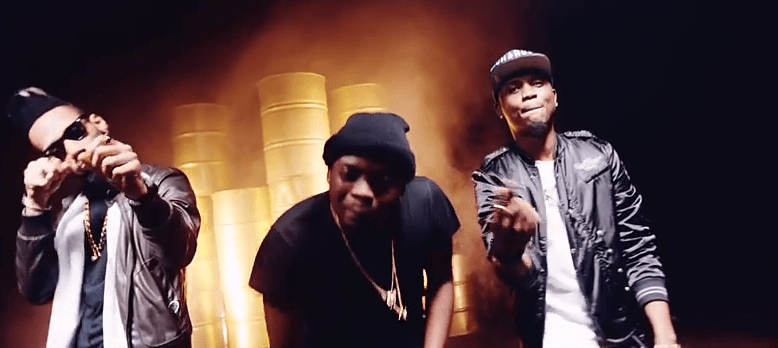There has been no better time, in about half a decade, than now to be an ardent supporter of Nigerian hip-hop. 365 days ago, the genre was adjudged by many to be in the doldrums, and there was little to dispute that opinion— even the country’s most revered rapper sneered with disdain at seemingly, nonperforming peers upon re-entry. Although Nigerian rap still gets the occasional slander, a lot of it uncalled-for, the difference, currently,
That 2018 was one of the best and more impressive years for Nigerian hip-hop in recent times is a sentiment that holds water, up to an undisputable point as well. In the dying moments of 2017, current Senior Music Reporter at Pulse Ehis Ohunyon compiled a list of the best Nigerian rappers of that year for FilterFree, and it was easy to infer, from the opening paragraph down to the strength of the selections, that there was a dearth of truly impactful Nigerian hip-hop artists at the time. Not for lack of talent or lack of, at least, a cult audience, it was clear all involved parties needed to step up significantly, and 2018 saw a tangible amount of growth, thanks to a panoply of acclaimed projects and reciprocity of vocal support from listeners.
On the first day of this year, we published a list of the best rappers from last year, and though there were ten spots to fill, a total of 12 rappers (and one honourable mention) were highlighted. Regardless of the expected debates concerning hierarchy, it was impossible to say none of the rappers on that list were unworthy of being considered as the best of 2018. Beyond filled up spots, though, what makes 2018 a winning year for Nigerian hip-hop is how easily you could point at rappers with remarkable releases who didn’t make the cut.
With 2018 going down as what many hip-hop enthusiasts will consider the beginning of a resurgence for the genre, 2019 is shaping up to be an even more curious year by comparison. As far as Nigerian music is concerned, the first memorable punches of this infant year have been delivered by hip-hop artists, and it’s almost impossible to not get excited for what the year holds.
Just to recap, ICYMI…

On the very first day of the year, or the second depending on your preferred streaming or downloading platform, Africa’s premier rap duo Show Dem Camp released their second album in the space of three months, Clone Wars 4: These Buhari Times, a piercing look at the less than desirable state of the country and its effects, using the duo and guest artists as points of contact. Considering the extensive conversations surrounding the consistent, jaw dropping height of lyricism, content timeliness and overall splendid musical quality, CW4 achieved the Nigerian hip-hop twitter equivalent of stopping the internet.
If CW4 attained an equivalent, the LAMB Martell Cypher released this past Thursday actually brought social media to a halt. Featuring Loose Kaynon, A-Q, M.I Abaga and Blaqbonez slinging quote-worthy, brag-filled, vitriol-laced rhymes over a felony-deserving knock provided by producer Beats By Jayy, the cypher not only received an overwhelming portion of praise, it also proved to be a masterclass in branding, one that supposedly bodes well for the Nigerian hip-hop scene going forward.
Less than 24 hours after the Martell Cypher, it was the Falz’ turn to temporarily own the internet. “Talk,” the rapper’s first single of the year, finds the rapper delving further into the brazen, socially conscious side he showed on last year’s “This is Nigeria,” loading up the effort with scarcely disguised, mocking
The impressive video conveying Falz’ message has been gathering much love on social media. And although he’s getting dragged for his redundant obsession and retrograde take concerning sex workers and “promiscuous girls,” his new album, Moral Instruction, an attempt at overtly socio-political music complete with cover art by legendary illustrator Lemi Ghariokwu, is already topic of discussion.
All of this suggests the Nigerian rap scene might just enter into overdrive in 2019, but it will be disappointing if the hype isn’t justified, or, just as bad, the scene stalls at its current level of progress. Taking a critical look at last year, and the current, unfolding happenings, below are three important fixes that need to be addressed.
I. Embrace the Diversity
By whatever standards, Olamide was the biggest rapper of 2018, that and the quality of his releases, irrespective of their unabashed pop lean, earned the veteran rapper the clear right of being ranked so high on the aforementioned year recap. During ensuing conversations, the high placement of the YBNL head honcho (at #3) seemed to bother a couple of readers, and many were quick to cite the artist’s current lack of lyrical heft to justify their claims. In truth, what these

Since the marquee collaboration between the tri-headed monster of Olamide, Reminisce and Phyno taking brash disses at “punchline” rap, there has been an imaginary, wide chasm between English rappers and those who rap in their native dialect. Over the years, rap music has continued to unfold layers of diversity, both internationally and locally. While the illusion of superiority of form still persists, and will probably remain forever, the upward growth of rap music in Nigeria will rely on something close to a whole acceptance of every form of rap and type of rapper in the country.
While the criticisms and thematic concerns are warranted, if unnecessarily blown out of proportion, it is without a doubt that the street rappers are currently doing a better job of telling its part of the Nigerian story in comparison to its more buttoned-up peers. The best way for hip-hop to gain and retain a klepto’s hold on Nigerian music consciousness is the realization that all facets of the Nigerian class need to be represented. Of course, due to lingual limitations, it might be impossible to understand and love the zaniness of indigenous rappers, but we all need to accept that a YBNL and a Chocolate City can and need to thrive for a panoramic Nigerian hip-hop experience. Also, we don’t want to be tribal fools now, do we?
II. More Collaborations
One of the purest moments of joy for the hip-hop scene last year was the litany of reactions trailing the title track of Loose Kaynon and A-Q’s Crown, a posse cut enlisting the assistance of Show Dem Camp. Justifying its anticipation, “Crown” sparked an authentic, wide level of excitement, attestation to what can occur should Nigerian rappers join forces, on wax or even off wax for that matter. More recently, the tag team of Ghost and Boogey on CW4’s “Tipping Point” was the stuff of wet dreams for many hip-hop fans, and they made their elation vocal.
There’s an old quip about how individual broomsticks can easily be broken, but bundled together they become a much sturdier unit. To know just a tiny
At the tail end of the Martell Cypher, it was exciting to
hear M.I rousingly suggest to Loose and A-Q that the cypher become episodic,
showcasing talented Nigerian rappers while also securing a bag with some copious,
substantial amount in it. Should this idea become a reality, the cypher might
become a primary platform for rappers to spread their following. Funnelling back
into diversity, the inclusion of young, talented indigenous rappers like Zlatan,
Limerick, Zoro, Classiq etc., would only strengthen bonds across lines, and inherently
widen the support base for hip-hop in the country.
III. Improved Quality of Music
Despite the upward trajectory of Nigerian hip-hop, cynicism still abounds in large quarters, and while the rhetoric of a lack of rappers is now inefficient, attention is turning to the quality of the music being released by these rappers. I’m not totally referring to content and style in this case, because different things appeal to different people when listening to music, but to the noticeable, superficial quality of the music. In other words, its pristineness and how listenable it is, period. Regardless of how a listener feels about a rapper’s lyrics and their delivery, there’s a begrudging level of respect and less ambiguity when the music selection and its accompanying sheen is superb—even enunciation matters.
Following his mandate charged return single, “You Rappers Should Fix Up Your Lives,” M.I released two full-length projects during 2018, both splitting opinions among listeners in terms of style switch up. But one thing was constant: everyone was on the same page when it came to the majestic production and immaculate engineering. In an age where rappers have to go DIY, without the type of budget afforded an artist like M.I, asking for a difficult, resplendent level of care to their output might seem like asking for too much, but it needs to be demanded.
Product and the packaging are intertwined when it comes to a genre of music that many are often critical of. Olamide, a usual culprit when it comes to terrible engineering, can get away with his lapses in this department because he knows the majority of his fan base listen to his music from noisy speakers, and/or most likely don’t know the pertinence of mixing and mastering. For rappers trying to appeal to a predominantly higher class of listeners, there’s no way around ensuring their music moves up to a laudable standard. For an uberous rap scene, quality over quantity should be the mantra; inundating listeners with subpar production and shoddy engineering isn’t exactly encouraging, both for enthusiastic and new supporters.


